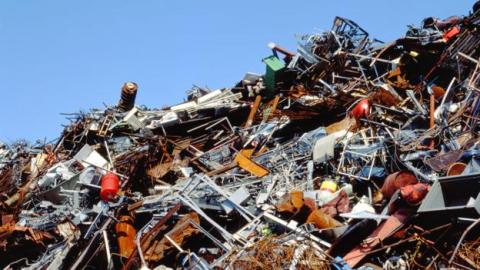How will future archaeologists study us?
Given that so much of our culture is now predominantly digital, then, how will it last through the centuries? How will all the information about our institutions, societies, culture and scientific discoveries be preserved for the long term? We’re producing so much data these days that we can’t possibly print it all out. What will future archaeologists actually turn to, if they want to study how we lived?
As BBC Future discovered recently in our series The Genius Behind, one possibility is that archaeologists will read our data – like the text of a book – from DNA, deliberately encapsulated it in “synthetic fossils”. In the future, it will likely only get cheaper and easier to read the code that defines all known organisms. Robert Grass, at ETH Zurich in Switzerland, and his collaborator Reinhard Heckel have developed one method of encoding the data as DNA, as the video below shows:
So how does it work? After all, DNA itself doesn’t keep very well. “If you’re going to go into the environment, dump it underground or have it lying around somewhere for some time, DNA is not very stable. It decays in half a year or so – or even less just in ambient conditions,” explains Grass. “And so we were looking for a way to stabilise DNA.”
The solution? Synthetic fossils. Grass and his colleagues knew that they needed to find a suitably inert material – something which wasn’t reactive and wasn’t easily damaged. In the natural world, DNA is best preserved in bone at very low temperatures. That’s why researchers were recently able to read DNA found in bones from a 700,000-year-old horse, for example. But while calcium phosphate in bones has a good chemical structure for encapsulating DNA, it has one major disadvantage – it dissolves in water.
Eventually, the ETH team settled on an everyday material we would all recognise: glass (silica). “We chemists love glass. Everything is always done in glassware – we use it for all of our reactions because of that property, it’s extremely resilient,” says Grass. While a glass pane or bottle seems fragile, the glass used by ETH is extremely sturdy because it’s incredibly small – in fact, it’s basically powder. Each particle containing a lump of DNA is only around 150 nanometres wide. Freezing them, hitting them or exerting huge mechanical pressure on them would have no effect.
They can even withstand extraordinarily high temperatures but with one caveat – the DNA inside can’t. Grass says it will be destroyed above 200C so while the particles themselves might survive a fire in a library of the future, the actual data wouldn’t. The best temperature, in fact, for storing the synthetic fossils would be something like -18C to prevent degradation over time.
Reading DNA is easy enough, though getting the DNA out of those silica particles requires a special technique using a carefully prepared fluoride solution. For this reason, Grass points out that instructions would have to be left with the archive somehow so that they would be accessible to civilisations or researchers of the far future. “Think of a stone on which you engrave the instructions,” he suggests as an example.
It’s the sort of problem that others have attempted to tackle in a variety of ways. Kahle gives the example of the Rosetta Disk – it’s an archive of 1,500 human languages. There is an engraved explanation and the text of the whole archive is etched in a spiral, the beginning of which is clearly legible with the naked eye. The spiral gets smaller and smaller, but the whole thing could be read with an optical microscope. Objects like the Rosetta Disk announce by their very form and inscription that there is something of interest and value there. Signalling this would be harder with microscopic powder and that’s something that Grass and his colleagues are still working on. In principle, though, their approach could be used to reliably store key information for many thousands if not more than a million years.
One downside is that writing DNA, unlike reading it, is currently quite expensive. “You have to choose what you store and you have to choose [why it is] important,” comments Grass. “It’s a very, very difficult choice.” There’s also the fact that, often, what mankind chooses to preserve is not always what is most revealing – or interesting about us. Our rubbish has, throughout history, been a goldmine for archaeologists trying to understand how people in bygone eras really lived. But whether waste survives millennia or not is essentially a matter of chance.
Civilisations always turn to dust eventually. Maybe our dust will tell a story. A fine powder containing DNA – and the most treasured information of our time.
Chris Baraniuk

